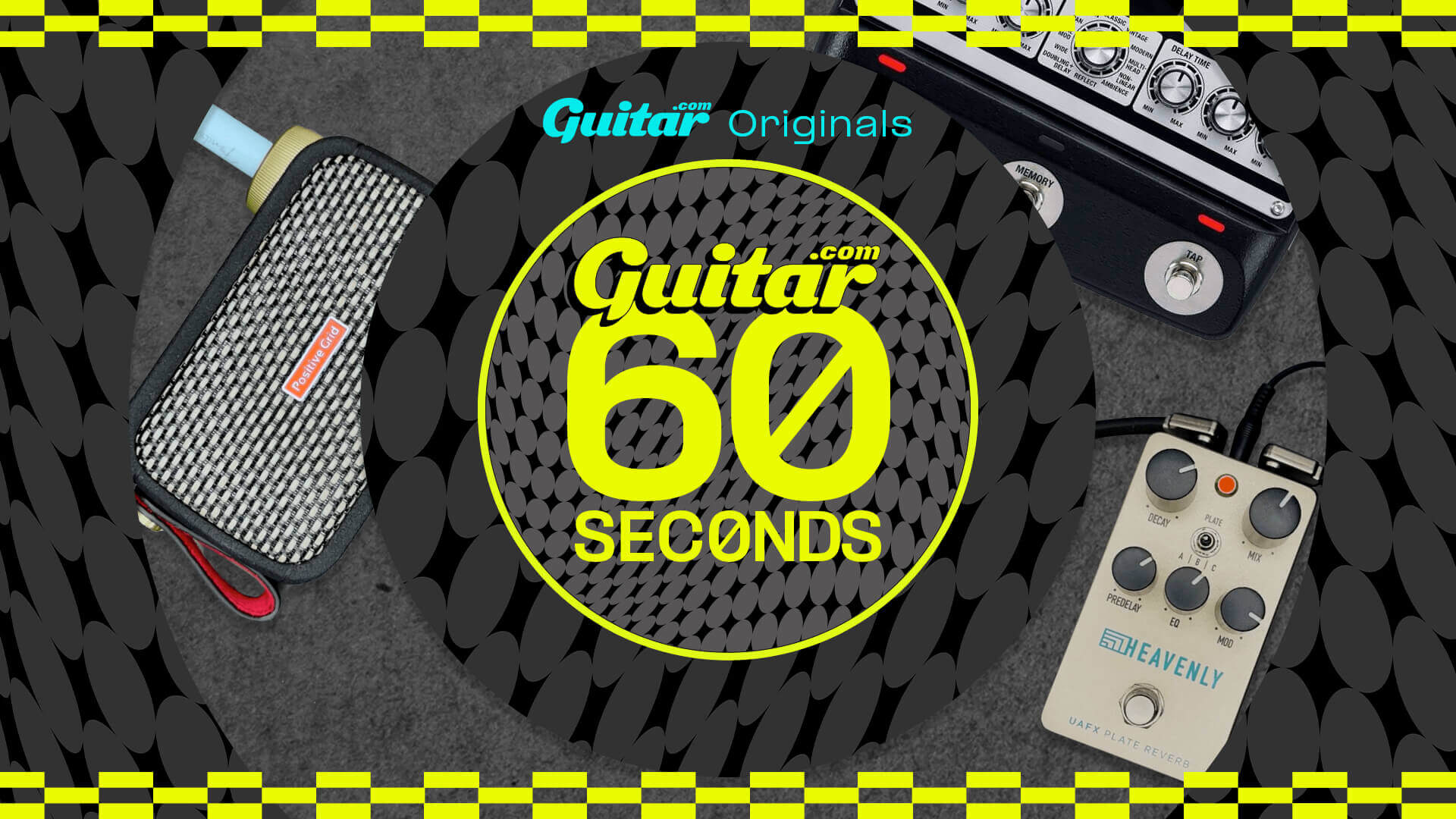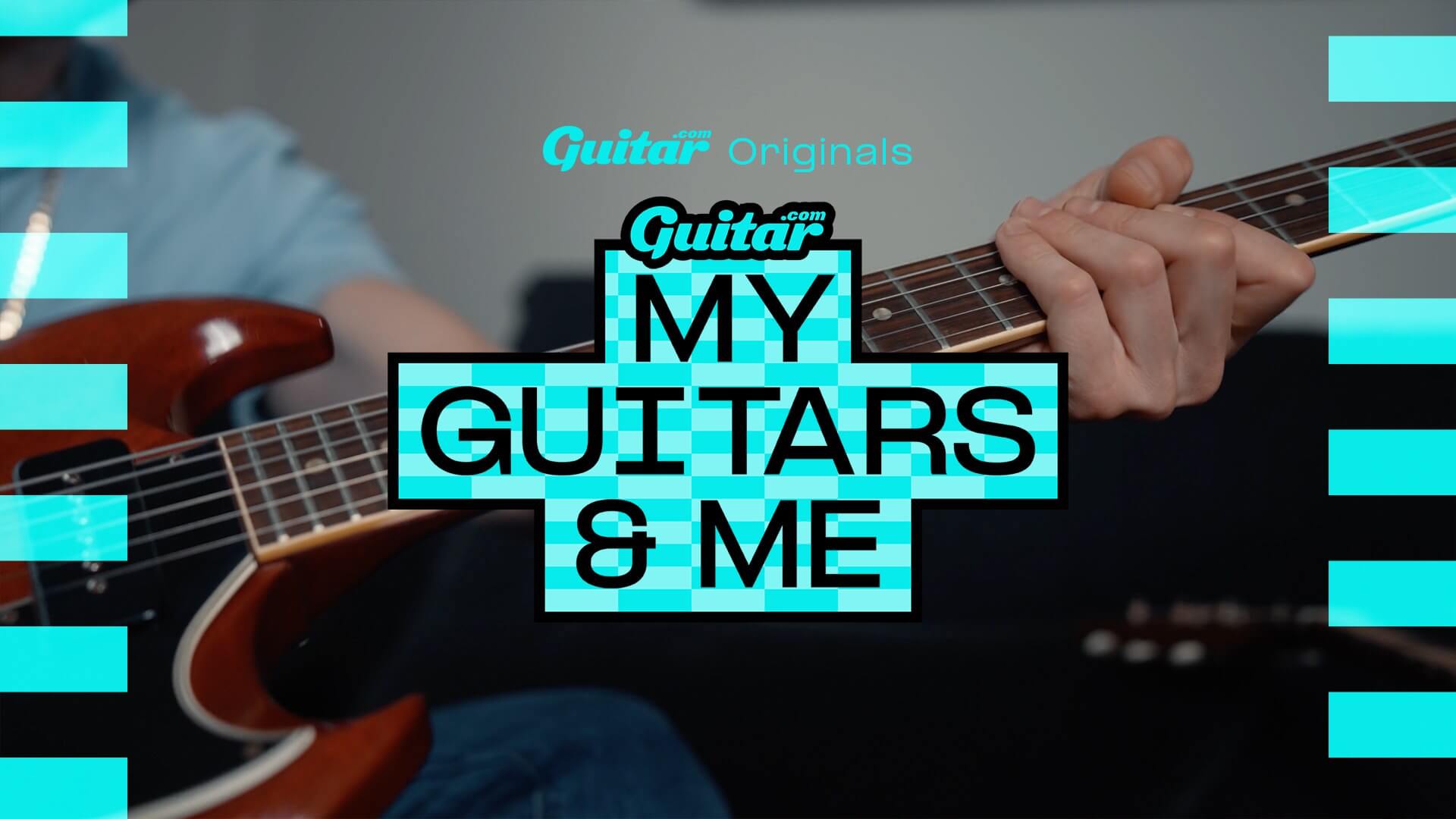Walrus Audio Silt review: the gnarliest Walrus fuzz pedal yet?
This unique tube-driven fuzz runs the gamut from Black Keys to Sunn O)))
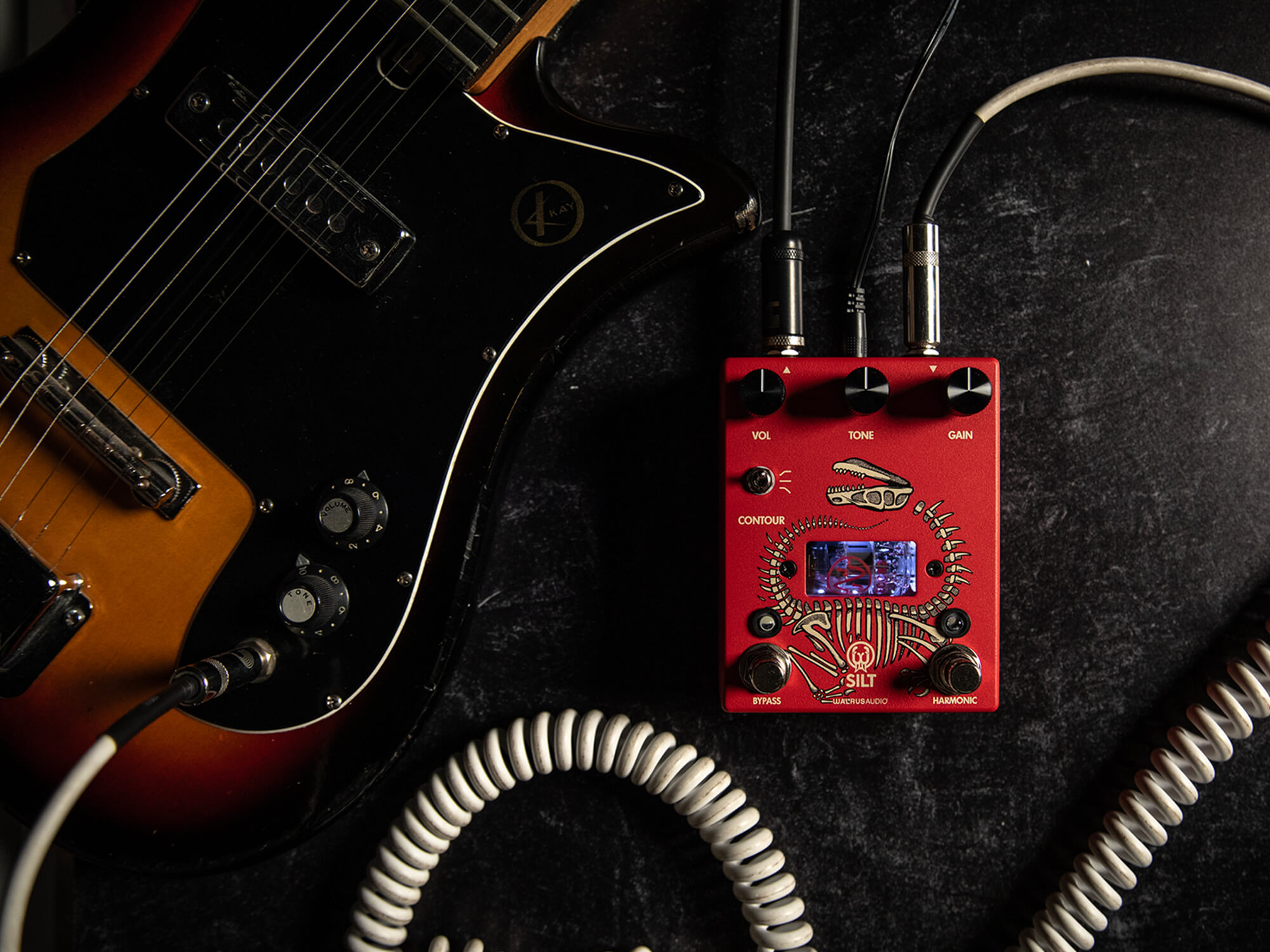
Walrus Audio Silt
Review Overview
Our rating
8
Our verdict
$299, www.walrusaudio.com
Guitarists are funny, aren’t they? You can tell them that a sandwich toaster has tube-driven DC rectification and they’d swear the melted cheddar has more depth to its flavour. So obviously the Silt, a new tube-driven fuzz pedal from Walrus Audio, is a very exciting thing indeed, even if evaluating it puts a pedal reviewer in grave danger of using words like ‘responsive’, and ‘chewy’.
So what is the Silt, and why does it need a tube, anyway? Walrus is pretty schtum about its actual circuit architecture beyond calling it a ‘harmonic fuzz’, but there’s no mention of clipping diodes anywhere – so presumably, the fuzz comes mainly from driving that 12AU7 far beyond its headroom, as you would a solid-state transistor in a Fuzz Face. The Silt’s second footswitch, the ‘harmonic’ part of ‘harmonic fuzz’, adds an analogue octave-up before the main fuzz circuit – think the Dan Armstrong Green Ringer or the Univox Superfuzz.
All this is packed into a sturdy, relatively compact case. The tube is reassuringly enclosed entirely within the pedal, but it can be seen through a transparent window (very important – how else are you going to see what it sounds like?). Pedals that have tubes poking out of the case always make me nervous, but here I’d be a lot more comfortable actually taking this to a gig. And in the worst case of a failed tube, the manual outlines the simple steps needed to replace it.
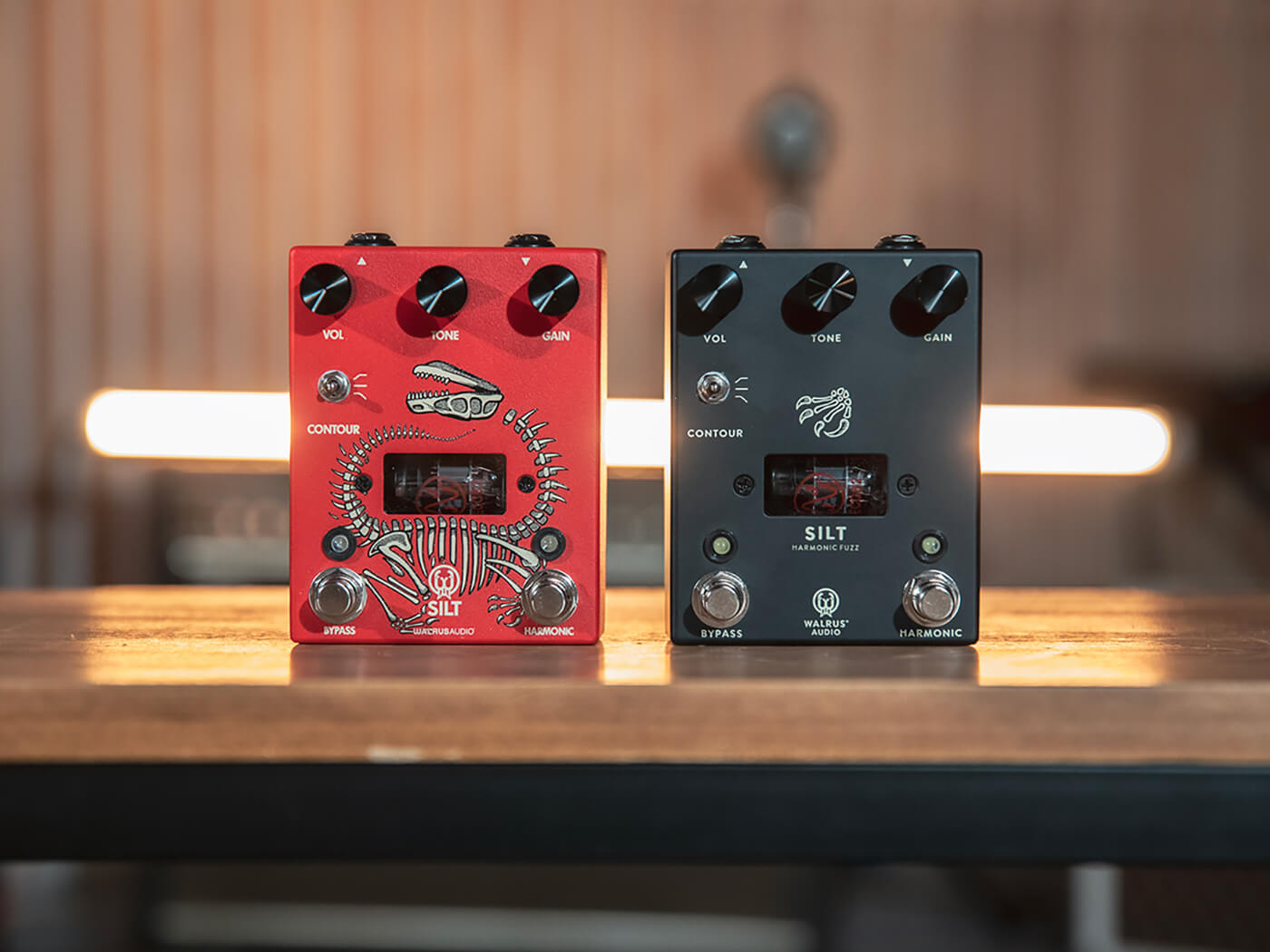
With me for review is the black version, which has a much more minimalist design of just a single dinosaur claw rather than a full skeleton of the red variant. I like how it looks, even if the matte-black finish is an absolute fingerprint magnet. Build quality is solid though: there are the knurled metal knobs and chunky soft-touch footswitches we’ve come to expect from Walrus. Everything feels very premium.
Being a tube pedal, the Silt does require a little more juice than the average drive unit. The required 300mA draw here is approaching what big-box digital delays and reverbs need – probably within the bounds of at least one of the outputs on your PSU, but it’s worth double-checking that you’ll be able to supply enough current before you break something. You can also gain a little bit more volume output by powering it at 12V if you need to – although it’s plenty loud at 9V already.
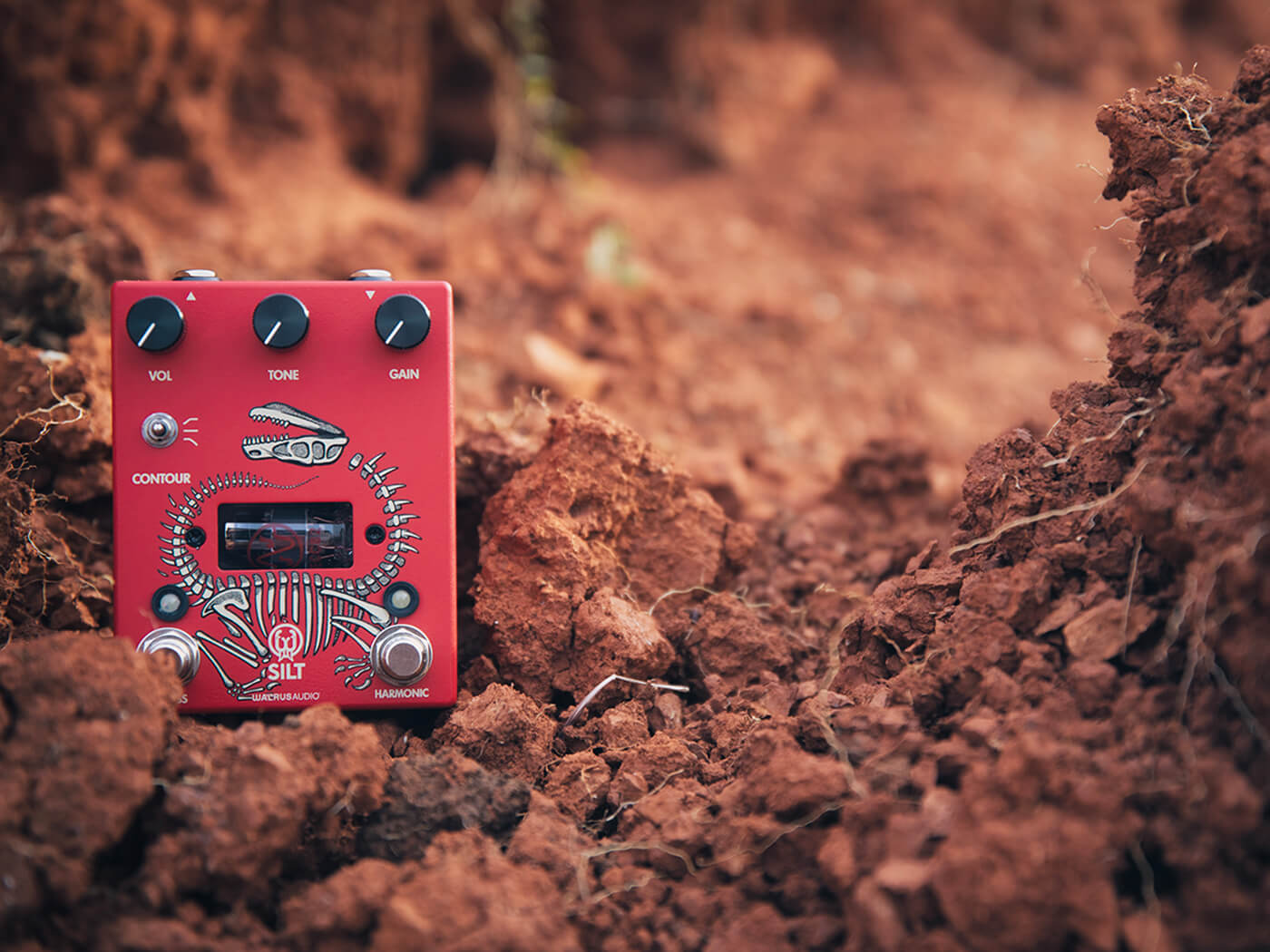
How does the Walrus Silt sound?
With the Harmonic footswitch disengaged at first, I’m off to a good start with the Silt, but I’m also a little surprised. My ears are happy, but the sounds being coaxed out of the Silt are, strangely, not making me want to use words like ‘responsive’ and ‘chewy’. Because it’s not really doing the low-gain dynamic preamp thing that I’m used to tube pedals doing. Instead, it’s a thick, smooth distortion that’s quite compressed, very loud, and very midrange-heavy.
The border between fuzz and distortion is fairly arbitrary, of course, but in the same way that some pedals approach it from the distortion direction, the Silt approaches it from the fuzz direction. You can definitely close your eyes at times and imagine you’re playing a RAT with a dimed gain knob.
That’s not to say the tube is being totally wasted: because the distortion is being coaxed out of such ancient and slow-moving technology as a beam of electrons shooting through a vacuum, the edges of the sound are still quite smooth, even if the amount of distortion happening is on par with an aggressive fuzz.
EQ-wise, the Silt offers pretty extensive control. The main tone control is an active tilt EQ: it boosts and cuts highs and lows rather than just passively filters the whole sound. I don’t find it too boomy or too fizzy in either extreme by itself, but that’s in part thanks to the contour toggle, which lets you do one last tonal adjustment with either a flat response, a high-pass or a low-pass filter.
The effect is subtle, but the three filter modes help the Silt to sit well in a full signal chain. With a cleaner amp, the flat EQ keeps things sounding full, but with a loud, dirty amp, the low-end quickly becomes overwhelming – switching to the high-pass mode, things are immediately a lot less messy. And when stacking the Silt into other pedals, the extra fizz can be smoothed out with the low-pass mode.
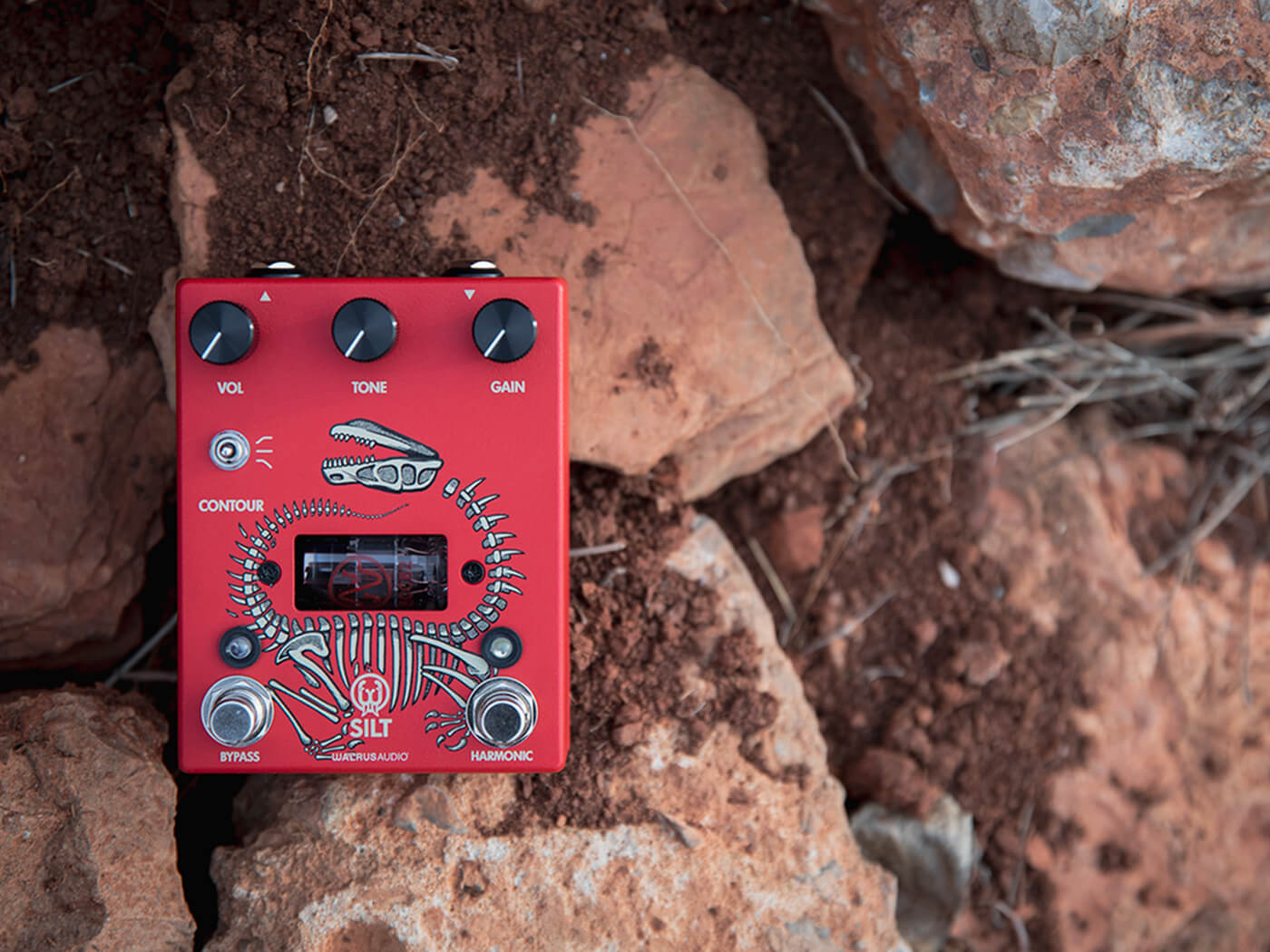
Harmonic Mode
The sounds so far are all well and good, but not a million miles away from what a boosted RAT or amp preamp can achieve in the right circumstances. But as soon as I press that other footswitch it’s clear that this is how the Silt justifies its existence. Harmonic mode adds an analogue octave-up before the tube fuzz, and if you’ve ever played an EQD Life Pedal or Hoof Reaper, you’ll know this is a recipe for a very, very good time.
Why? Analogue octaves work by folding your sound back into itself to double the frequency. This creates a spluttery, chaotic sound, but it can lack punch. Running it straight into a thick tube-drive, however, boosts things back up to a complete picture: sustained powerchords sing with new harmonics, and lead playing is a psyched-out blast thanks to growling beat frequencies and clanking, accentuated pick-attacks. There’s no blend control for the Harmonic mode, nor does there need to be. It’s not a subtle effect, but it’s a fuzz pedal – if you want subtle, you can always turn it off.
Walrus’s demo playthrough for the Silt focuses on some garagey, bluesy riffs – Black Keys and the like. Like any good spitty octave-fuzz, it’s undeniably great at that sort of thing. But I first give the Harmonic mode a go with a baritone tuned to A standard. And, well, holy shit – a downtuned powerchord through the Silt is undeniably the heaviest sound I’ve ever heard come out of a Walrus pedal. It’s not a tight, chugging distortion, but for massive, slow riffs, it’s doom perfection.
Is the Walrus Silt worth the money?
So the Silt is capable of some lovely tube-driven fuzzstortion, as well as some more unhinged, doomy spittiness. That might have already sealed the deal for you – but maybe unsealing that deal is the price. Because $299 is quite the investment in a dirt pedal. If you are really in love with the sound of cooking tubes, the price of admission may well be worth it – but keep in mind that the actual tube-driven portion of this pedal isn’t charting completely new sonic territory.
If you do have the funds, I would still recommend the Silt. You can see where your money is going – not just on the tube, but on great build quality and a relatively complex two-mode circuit with powerful EQ options. For many, the coolness of a tube-driven fuzz could be worth the extra cash alone. Sonically, the Silt does hold up its end of the deal. Whether you want to add a scrappy, psychedelic character to a cleaner setup or are tuning low and playing slow, it won’t disappoint.
If you are intrigued by the sounds described above but don’t want to spend a whole $299, you do have options – a RAT and an EQD Tentacle will set you back a lot less, and get you pretty close to the Silt’s functionality. Even if they do take up a bit more space, and don’t have any tubes in them…
